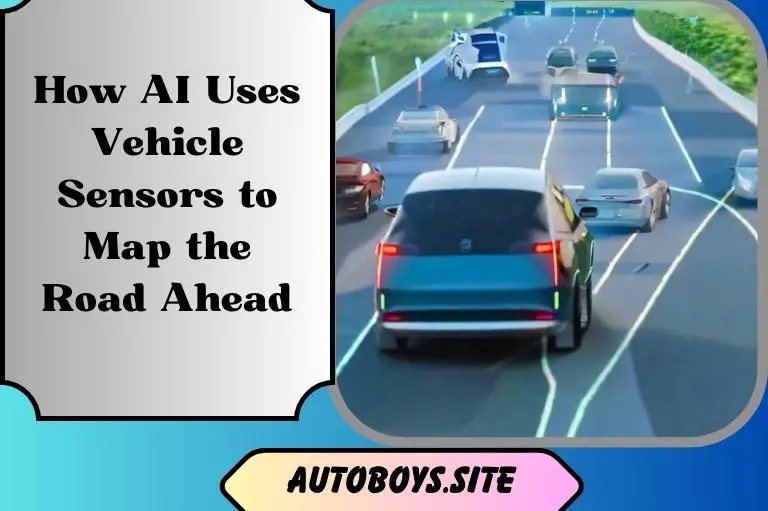How Autonomous Vehicles Will Revolutionize Urban Planning
The future of transportation is autonomous, and it’s arriving faster than urban planners can keep up. Autonomous vehicles (AVs) promise to radically improve how we get around cities by reducing traffic and emissions while reclaiming public space. However, the rise of self-driving cars also poses new challenges for urban planning that must be addressed to realize the potential benefits. How will cities allocate road space when most vehicles are autonomous? How can planners ensure that AVs improve access for all? The coming AV revolution allows urban planners to redesign cities for the better, but only if we start planning for it now.
In this article, we explore how AVs could impact urban planning and what cities can do today to prepare for an autonomous future. The path to that future is filled with obstacles, but with proper planning, AVs can help create greener, more livable, and accessible cities for everyone.
The Promise of Autonomous Vehicles for Urban Planning
The rise of autonomous vehicles (AVs) promises to revolutionize urban planning.
Reduced Traffic and Pollution
AVs can reduce traffic congestion by driving more efficiently than human drivers. With vehicle-to-vehicle communication, AVs can travel safely at higher speeds and with less space between them. This means existing road infrastructure can accommodate more vehicles.
Fewer traffic jams and smoother traffic flow will also decrease air pollution from vehicle emissions in cities. Studies estimate that widespread use of AVs could reduce traffic by up to 90% in some areas.
Repurposing Public Space
AVs can be summoned on demand and drive themselves to be parked in less populated areas or not at all. This may eliminate the need for parking spaces in city centers, freeing up valuable real estate for other uses like parks, bike lanes, or affordable housing.
Mobility for All
AVs can provide independence and mobility for children, disabled, blind, and elderly people who cannot drive. They offer an affordable transportation option for low-income communities as well. This can help reduce social isolation and provide access to jobs, healthcare, and education for more people.
While AVs pose challenges around data privacy, job market disruption, and infrastructure requirements, they have enormous potential to create more livable, sustainable, and equitable cities if policymakers and urban planners start preparing for their impacts today. With proper planning and policies, AVs can revolutionize urban life for the better.
Reducing Traffic Congestion and Improving Mobility
Autonomous vehicles (AVs) have the potential to significantly reduce traffic congestion in cities. By coordinating with each other, AVs can travel more efficiently in tight formations at optimal speeds, increasing road capacity. Studies estimate that with just 10-15% market penetration, AVs could reduce traffic congestion by up to 40%.
AVs may also provide more mobility options for those unable to drive, such as elderly, disabled, or young populations. On-demand autonomous shuttle services and taxis could supplement or replace private car ownership, reducing parking demand and freeing up space for alternative uses like bike lanes, green space, or housing.
However, the transition to AVs poses challenges for urban planning. As AVs become widely adopted, parking lots and garages may become obsolete, requiring planners to redesign city streets and repurpose existing parking infrastructure. There may also be an increase in “zero occupancy” trips as AVs reposition themselves or travel to pick up passengers. Planners will need to manage curb space carefully to avoid congestion from idling AVs.
Overall, AVs are poised to significantly transform transportation in cities. With proactive planning, AVs can enhance mobility, reduce emissions, and make cities more livable. Planners should start preparing now by analyzing how their city may be impacted, identifying key challenges and opportunities, and updating policies and infrastructure to support the safe, efficient, and sustainable introduction of autonomous transportation. The future is autonomous, and the time for cities to get ready is now.
Designing Cities for Future Autonomous Vehicles
Autonomous vehicles (AVs) will transform how cities are designed and built. Urban planners will need to rethink city infrastructure to support AVs.
Accommodating Autonomous Vehicles
To accommodate AVs, cities will need to redesign roads and allocate space for autonomous vehicle lanes and drop-off zones. Some experts suggest creating “AV-only” lanes restricted to autonomous vehicles. These lanes could have embedded sensors and technology to facilitate vehicle-to-vehicle communication.
AVs will also require designated pick-up and drop-off points for passengers and goods. Urban planners will need to determine optimal locations for these points that minimize traffic disruption. Many envision networks of small, decentralized stations throughout cities rather than large centralized hubs.
Improving Livability
The introduction of AVs presents an opportunity to make cities more livable. With less need for parking lots, freed-up space can be converted into parks, housing, and commercial developments. Narrower roads will also leave more room for bike lanes, sidewalks, and green spaces.
AVs can enhance mobility for all city residents. Those unable to drive like children, the disabled, and the elderly will have greater independence and access to transportation. With fewer personal vehicles, cities may see less traffic and improved air quality.
Developing Policies
To prepare for AVs, planners will need to develop policies and regulations on how autonomous vehicles operate in cities. Policies should aim to maximize the benefits of AVs like reduced emissions and increased access for underserved groups. Regulations may set guidelines around vehicle communication standards, data-sharing protocols, and operational zones for AVs.
While AVs will bring significant changes, proactive planning and policymaking can help cities leverage the benefits of autonomous transportation and make the transition as seamless as possible. With open collaboration between industry leaders, policymakers, and communities, cities can design infrastructure and policies to support safe, sustainable, and equitable mobility for all.
Planning for Pedestrian Safety in the Age of AVs
Autonomous vehicles (AVs) have the potential to greatly improve pedestrian safety, but urban planners must consider how to best facilitate this transition. As AVs become widely adopted, planners expect reduced pedestrian collision rates due to the vehicles’ advanced sensing capabilities and algorithms focused on avoiding vulnerable road users. However, designing AVs to be pedestrian-friendly is an ongoing process that requires close collaboration between technologists, urban planners, and the communities they serve.
AVs can use LiDAR, radar, cameras, and sophisticated software to detect pedestrians and cyclists from further away and with higher accuracy than human drivers. The vehicles are designed to avoid collisions by automatically braking or changing direction when needed. Some estimates indicate that over 90% of pedestrian fatalities today are due to human error, so removing the human driver is poised to dramatically improve safety.
However, AVs must be carefully designed and rigorously tested to ensure they fully prioritize pedestrian safety. They need to be able to anticipate unpredictable pedestrian behavior, see pedestrians in low light or obscured by obstacles, and respond quickly in emergencies. Urban planners should advocate for pedestrian safety to be a top priority in AV development and work closely with companies to test the vehicles in real-world conditions.
As AVs become widely used, planners will also need to rethink how roads and sidewalks are designed to maximize the benefits of the technology. Options include eliminating street parking to provide dedicated AV passenger loading zones, widening sidewalks, and creating pedestrian-only zones. Intersections and crosswalks may be redesigned to reduce conflicts between AVs, pedestrians, and cyclists. With thoughtful planning and policymaking, AVs can usher in a new era of pedestrian-friendly cities. The future looks bright, as long as we’re headed in the right direction.
The Road Ahead: Challenges for Urban Planners
The rise of autonomous vehicles (AVs) will significantly impact urban planning. As AVs become widely adopted over the next several decades, cities will need to adapt to take advantage of the benefits they offer while addressing the challenges they present.
Reduced Traffic and Improved Safety
AVs can reduce traffic and improve road safety by traveling efficiently and avoiding accidents. With connected vehicle technology, AVs can travel closely together in coordinated “platoons” that take up less road space. They can also sense each other and avoid collisions. Studies estimate that widespread AV use could reduce traffic by up to 90% and decrease the number of accidents by up to 90%. This would allow cities to reallocate road space for other uses like bike lanes, sidewalks, and green space.
Challenges for Planners
However, AVs also pose challenges that planners must consider. For example, AVs may increase total vehicle miles traveled as empty vehicles travel between passengers or make extra trips. This could worsen traffic and pollution. Planners also need to determine how to allocate road space between AVs, transit, cyclists, and pedestrians. They must update infrastructure like traffic lights to properly manage both AV and human-driven vehicle traffic.
Preparing for an Autonomous Future
To prepare for an autonomous future, planners should invest in connected vehicle infrastructure, redesign roads to be shared by all modes, and update policies and regulations around AVs. They need to be proactive and collaborate with researchers and AV companies to understand how AVs may impact their cities. With proper planning and policymaking, cities can harness the benefits of AVs to improve mobility for all residents while avoiding potential downsides like increased congestion and emissions. By embracing AVs as part of a sustainable transportation system, cities can revolutionize how people and goods move in the decades to come.
Conclusion
As autonomous vehicles become mainstream, they will transform our cities in radical ways. Urban planners have an opportunity to reimagine how we live, work, and play with the rise of this transformative technology. By reallocating road space, improving traffic flow, and reducing parking needs, cities can become greener, safer, and more livable for all.
While there are challenges ahead in ensuring equitable access and mitigating unintended consequences, autonomous vehicles promise to usher in a new era of sustainable transportation and community development. The future is unwritten, but with proactive planning and openness to innovation, our cities can thrive in the age of autonomy. The road ahead is long, but the promise of more livable, sustainable, and just communities is worth the journey.







